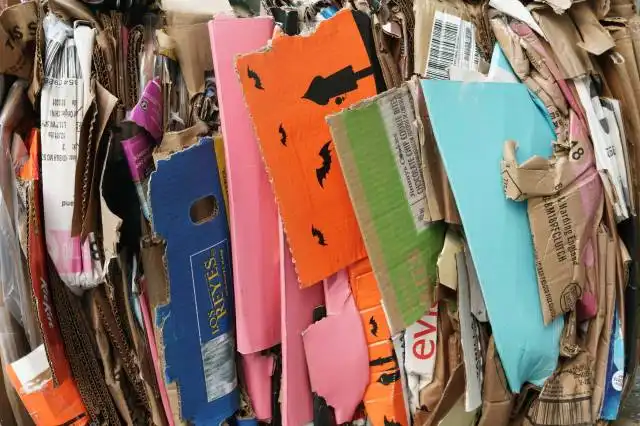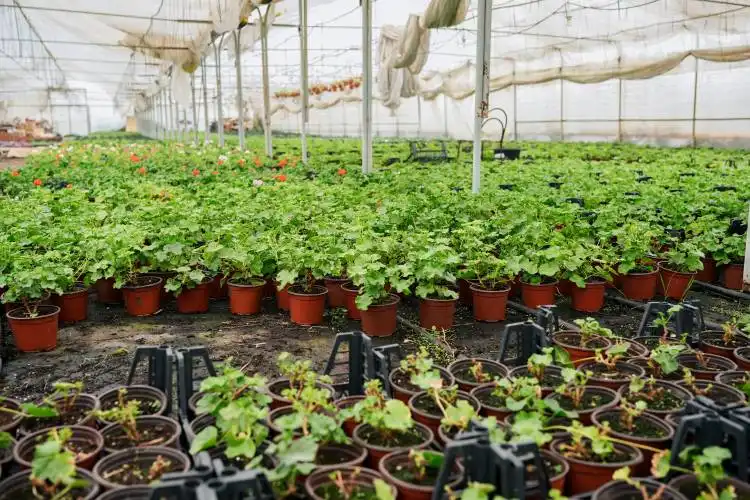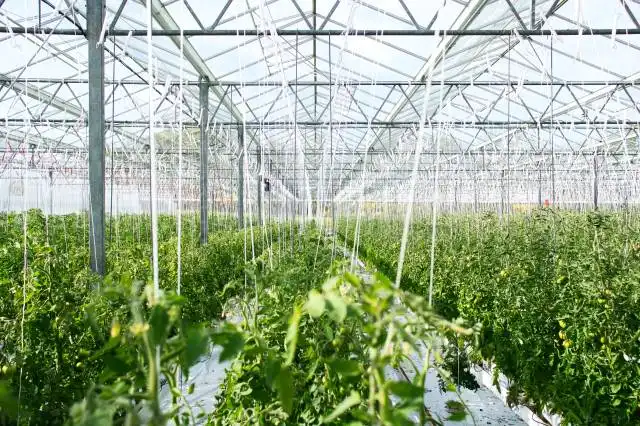Start an Herb Farm
Turning Your Urban Jungle into a Blossoming Herbal Haven
| Updated


HERB FARM
Picture yourself as a proud proprietor of a serene and sustainable herb farm! Amidst the hustle and bustle of the city, your little farm breathes life into dry martini olives and marinara sauce pizzas, one sprig of rosemary at a time. In essence, as an herb farmer, you will be cultivating a variety of aromatic herbs like basil, mint, oregano, and rosemary, that both food enthusiasts and health-conscious people can add to their culinary endeavors or wellness routines. As a bonus, it also allows you to bond with nature and get your hands dirty in the most rewarding way.
Jump to Business Plan
RELATED BUSINESS IDEAS
Browse ALL Sustainability & Eco-Friendly Initiatives Business Ideas
Discover Your Perfect Domain
Unlock the door to your online success with our hand-picked selection of premium domain names. Whether you're starting a new venture or rebranding an existing one, the right domain can set the tone for your digital presence. Browse through our curated list, each with its unique potential to enhance your brand's visibility and credibility.
HERB FARM MINI BUSINESS PLAN
This a quick reality check to help you identify the strengths and weaknesses of your business concept before you dive in.
Business Idea: Starting a Herb Farm
Expected Percent Margin:
- Gross Margin: 40-60%
- Net Profit Margin: 10-20%
Earnings Expectations:
- Daily Earnings: $100 - $300
- Weekly Earnings: $700 - $2,100
- Monthly Earnings: $3,000 - $9,000
- Annual Earnings: $36,000 - $108,000
Actions to Hit Those Numbers:
Herb Selection & Cultivation:
- Initial Investment: At least $10,000-$30,000 for high-quality seeds, organic fertilizers, and essential farm tools.
- Selection of Herbs: Cultivate a variety of popular, high-demand herbs.
Marketing and Customer Acquisition:
- Social Media: Regular postings & updates about your farm, unique herbs, gardening tips.
- Local Farmers' Markets: Participate to get direct access to consumers.
Sales and Customer Experience:
- Direct & Wholesale Selling: Consider selling directly to consumers & wholesale to grocers/restaurants.
- Packaging: Develop eco-friendly & attractive herb packages.
Cost Control:
- Land: Initial acquisition can be a major cost. Consider leasing land or starting with an indoor herb garden.
- Water & Fertilizers: Invest in drip irrigation and organic composting to manage costs & promote sustainability.
Business Operations:
- Planting & Cultivating Cycle: Understanding seasonal demands & ideal growing times for each herb is crucial.
- Pest & Disease Management: Regular monitoring & organic control methods to reduce losses from pests & diseases.
This is a generalized estimate & can vary depending on the variety of herbs, market demand, efficacy of marketing efforts, and individual business tactics. Consult with a horticulture expert or agricultural extension service for personalized advice.
NOT WHAT YOU HAD IN MIND? Here are more ideas



Browse ALL Sustainability & Eco-Friendly Initiatives Business Ideas
Grab Your Business Website Name
Before you get caught up in the whirlwind of setting up your business, invest in a domain name. It's a small but significant step that lays the foundation for your brand and makes it easier for customers to find and trust you. Just like you wouldn't build a house without securing the land first, don't build a business without securing your domain name.
"Why? Can't that wait?" Here's why it shouldn't
Step 1: Determining if Starting an Herb Farm is the Right Endeavor
Breakdown of Startup Expenses
When considering starting an herb farm, it is important to understand the startup costs associated with the endeavor. This includes the cost of land, equipment, and supplies. Land can be leased or purchased, and the cost of the land will depend on the size and location of the farm. Equipment such as tractors, irrigation systems, and greenhouses will also need to be purchased or leased. Supplies such as seeds, soil, and fertilizer will also need to be purchased. Additionally, there may be costs associated with obtaining any necessary permits or licenses.
Breakdown of Ongoing Expenses
In addition to startup costs, there are also ongoing expenses associated with running an herb farm. These expenses include labor costs, water and electricity costs, and costs associated with marketing and selling the herbs. Labor costs will depend on the size of the farm and the number of employees needed. Water and electricity costs will depend on the size of the farm and the amount of water and electricity needed to run the farm. Marketing and selling costs will include costs associated with advertising, packaging, and shipping the herbs.
Examples of Ways to Make Money
There are several ways to make money with an herb farm. One way is to sell the herbs directly to consumers through farmers markets, online stores, or other outlets. Another way is to sell the herbs to restaurants and other food businesses. Additionally, herbs can be sold to wholesalers who will then resell the herbs to other businesses. Finally, herbs can be dried and sold in bulk to other businesses or to consumers.
Step 2: Naming the Business
When choosing a name for your herb farm, it is important to keep a few things in mind. First, make sure the name is easy to remember and pronounce. Second, ensure the name is unique and not already taken. Third, make sure the name reflects the mission and values of the business. Finally, make sure the name can be used for marketing and branding purposes.
When selecting a name, it is important to consider the type of herbs you will be growing. If you are growing a variety of herbs, you may want to choose a name that reflects the variety of herbs you will be growing. For example, if you plan to grow culinary herbs, you may want to choose a name that reflects the culinary aspect of the business. Additionally, you may want to consider the location of the farm when selecting a name. For example, if the farm is located in a rural area, you may want to choose a name that reflects the rural nature of the area.
It is also important to consider the legal implications of the name. Make sure the name is not already trademarked or copyrighted by another business. Additionally, make sure the name is available for use as a domain name and social media handle. It is also important to check with your local government to ensure the name is not already taken by another business in your area.
Finally, you may want to consider the use of keywords in the name. Keywords can help potential customers find your business more easily. For example, if you are growing culinary herbs, you may want to consider including the word “culinary” in the name. Additionally, you may want to consider including the word “herbs” in the name to make it easier for customers to find your business.
Step 3: Acquiring Land
When choosing land for an herb farm, there are several factors to consider. First, the land must be suitable for growing herbs. This means that the soil must be nutrient-rich and well-drained. Additionally, the land should be in a location with ample sunlight and access to water. It is also important to consider the size of the land, as larger plots of land may be more expensive to purchase or rent. Furthermore, the land should be in a location that is easily accessible for customers and suppliers.
Purchasing or Renting Land
When it comes to purchasing or renting land for an herb farm, there are a few options. For those who are just starting out, renting land may be the best option. This allows for more flexibility and less financial commitment. Additionally, renting land can be a great way to test out the viability of the business before investing in a larger plot of land. For those with more financial resources, purchasing land may be a better option. This allows for more control over the land and the ability to make long-term investments in the business.
Step 4: Creating a Business Plan
Creating a business plan is an important step in starting an herb farm. A business plan should include components such as a mission statement, a description of the business, a market analysis, a description of the products and services offered, a description of the target market, a competitive analysis, a marketing plan, a financial plan, and an operational plan. The mission statement should be a concise statement of the purpose of the business and the goals that the business hopes to achieve. The description of the business should include information about the location, the size of the business, and the type of business. The market analysis should include information about the current market for herbs, the potential market for herbs, and the trends in the herb market. The description of the products and services offered should include a list of the herbs that will be grown, the methods of growing the herbs, and the methods of selling the herbs. The description of the target market should include information about the demographic characteristics of the target market and the geographic area that the business will serve. The competitive analysis should include information about the competitors in the area and how the business will differentiate itself from the competition. The marketing plan should include information about the methods of advertising and promotion that will be used to reach the target market. The financial plan should include a budget, a projected profit and loss statement, and a projected cash flow statement. The operational plan should include information about the day-to-day operations of the business, such as the hours of operation, the staffing requirements, and the methods of ordering supplies.
Step 5: Obtaining Financing
Sources of Financing
Obtaining financing is an important step in starting an herb farm. There are several sources of financing available to entrepreneurs, such as bank loans, venture capital, angel investors, and government grants. Bank loans are typically the most common source of financing for small businesses, and they can be used for a variety of purposes, such as purchasing equipment, hiring staff, and purchasing inventory. Venture capital is a form of financing provided by investors who are interested in investing in a business in exchange for a share of the profits. Angel investors are wealthy individuals who are willing to invest in a business in exchange for a share of the profits. Government grants are typically provided to businesses that are working to solve a specific problem or to provide a service to the community.
Step 6: Finding Suppliers
Types of Suppliers
Finding suppliers is an important step in starting an herb farm. There are several types of suppliers that entrepreneurs should consider, such as local farmers, wholesalers, and online suppliers. Local farmers can provide fresh herbs at a lower cost than wholesalers, but they may not have the variety of herbs that a wholesaler can provide. Wholesalers typically have a wide variety of herbs, but they may not have the freshest herbs. Online suppliers can provide a wide variety of herbs at a lower cost than wholesalers, but they may not have the freshest herbs.
Step 7: Setting Up a Retail Space
Types of Retail Spaces
Setting up a retail space is an important step in starting an herb farm. There are several types of retail spaces that entrepreneurs should consider, such as a physical store, an online store, and a combination of both. A physical store can provide customers with a more personal experience, but it requires a larger investment of time and money. An online store can provide customers with a convenient way to purchase herbs, but it requires a significant investment of time and money to set up and maintain. A combination of both can provide customers with the convenience of an online store and the personal experience of a physical store.
Step 8: Promoting the Business
Types of Promotion
Promoting the business is an important step in starting an herb farm. There are several types of promotion that entrepreneurs should consider, such as advertising, public relations, and social media. Advertising can be used to reach a wide audience and can be used to promote the business in print, radio, television, and online. Public relations can be used to build relationships with the media and to create positive press for the business. Social media can be used to reach a wide audience and to engage with potential customers.
Step 9: Growing the Business
Strategies for Growth
Growing the business is an important step in starting an herb farm. There are several strategies that entrepreneurs can use to grow their business, such as expanding the product line, diversifying the customer base, and expanding the retail space. Expanding the product line can help to attract new customers and increase sales. Diversifying the customer base can help to increase sales by reaching new markets. Expanding the retail space can help to increase sales by providing customers with more options.
Step 5: Obtaining Necessary Licenses and Permits
When starting an herb farm, it is important to understand the types of licenses and permits that are required. Depending on the size of the farm, the types of licenses and permits needed may vary. Generally, a business license and a zoning permit are required. Additionally, there may be other permits required depending on the type of herbs being grown, such as a pesticide permit or a food safety permit. It is important to research the specific requirements for the area in which the farm is located.
Where to Obtain Licenses and Permits
Licenses and permits for an herb farm can be obtained from the local government. Depending on the area, this could be the county, city, or state government. It is important to contact the local government to find out the specific requirements for obtaining the necessary licenses and permits. Additionally, the local government may have resources to help with the process.
Cost of Licenses and Permits
The cost of licenses and permits for an herb farm can vary depending on the area. Generally, the cost of a business license is a few hundred dollars. Additionally, there may be other fees associated with obtaining the necessary permits. It is important to research the specific costs for the area in which the farm is located.
Time Frame for Obtaining Licenses and Permits
The time frame for obtaining licenses and permits for an herb farm can vary depending on the area. Generally, the process can take several weeks to several months. It is important to contact the local government to find out the specific time frame for obtaining the necessary licenses and permits. Additionally, the local government may have resources to help with the process.
Step 6: Purchasing Equipment
When starting an herb farm, there are several pieces of equipment that must be purchased. This includes items such as a tiller, a wheelbarrow, a rake, a shovel, and a watering can. Depending on the size of the farm, additional items may be needed such as a tractor, a mower, and a spreader. It is important to research the different types of equipment available and determine which ones are necessary for the farm.
Where to Buy Equipment
When purchasing the necessary equipment for an herb farm, it is important to shop around for the best prices. Many local hardware stores and garden centers will have the items needed. Additionally, there are many online retailers that offer a wide selection of equipment at discounted prices. It is important to compare prices and read reviews before making a purchase.
Cost of Equipment
The cost of equipment for an herb farm can vary greatly depending on the type and quantity of items purchased. Generally, the cost of a tiller, wheelbarrow, rake, shovel, and watering can can range from $200 to $500. If a tractor, mower, and spreader are needed, the cost can range from $2,000 to $5,000. It is important to factor in the cost of equipment when creating a budget for the farm.
Maintenance of Equipment
In addition to the initial cost of purchasing equipment, it is important to factor in the cost of maintenance. This includes items such as oil changes, blade sharpening, and tire replacement. Additionally, it is important to keep the equipment clean and stored properly to ensure it lasts for many years. Regular maintenance and proper storage will help to extend the life of the equipment and reduce the need for costly repairs.
Step 7: Planting and Growing Herbs
When planting herbs, it is important to choose the right type of soil and location for the herbs to thrive. The soil should be well-draining and nutrient-rich. Additionally, the herbs should be planted in a location that receives at least 6 hours of direct sunlight each day. It is also important to water the herbs regularly and to fertilize them every few weeks. Additionally, herbs should be pruned regularly to keep them from becoming overgrown.
Harvesting Herbs
Once the herbs have grown to the desired size, they should be harvested. It is important to harvest herbs at the right time, as harvesting too early or too late can affect the flavor and quality of the herbs. Additionally, herbs should be harvested in the morning, when their essential oils are at their peak. Herbs should be harvested by cutting the stems and leaves, rather than pulling them from the ground.
Storing and Selling Herbs
Once the herbs have been harvested, they should be stored properly to ensure their quality and freshness. Herbs should be stored in a cool, dry place, such as a refrigerator or pantry. Additionally, herbs should be stored in airtight containers to prevent them from drying out. Once the herbs have been stored, they can be sold either directly to customers or to local restaurants and markets.
Step 8: Selling Herbs
When it comes to selling herbs, there are a few different options available. The most common is to sell directly to customers either through a website, a farmers market, or a roadside stand. Another option is to sell to restaurants or grocery stores, or even to wholesalers. Additionally, there are some farmers who sell their herbs to companies who then use them to make herbal teas, essential oils, and other products.
Pricing Herbs
When pricing herbs, it is important to take into account the cost of production, the cost of packaging, and the cost of shipping. Additionally, it is important to consider the market rate for the herbs, as well as the demand for the herbs. It is also important to consider the cost of advertising and marketing. Finally, it is important to consider the cost of labor, as well as the cost of any materials needed to process the herbs.
Advertising and Marketing
When it comes to advertising and marketing, there are a few different options available. The most common is to use social media, such as Facebook, Twitter, and Instagram, to reach potential customers. Additionally, it is important to create a website and use search engine optimization to ensure that potential customers can find the business. Additionally, it is important to create a presence at local farmers markets and roadside stands. Finally, it is important to create relationships with local restaurants and grocery stores, as well as wholesalers, to ensure that the herbs are being sold.
Step 9: Marketing the Herb Farm
Marketing the herb farm is an important step to ensure success. It is important to create a plan that will help to spread the word about the farm and the products it offers. There are several ways to market the herb farm. First, it is important to create a website and social media accounts to share information about the farm and its products. Additionally, it is important to create a logo and branding for the farm that can be used on all marketing materials. It is also important to create a mailing list to keep customers up to date on new products and promotions. Additionally, it is important to create relationships with local businesses and organizations that can help to spread the word about the farm. Finally, it is important to create a presence at local farmers markets and other events to help to increase visibility and sales.
EXPLORE MORE CATEGORIES
Browse ALL Business Idea Categories
TAKE THE NEXT STEPS










